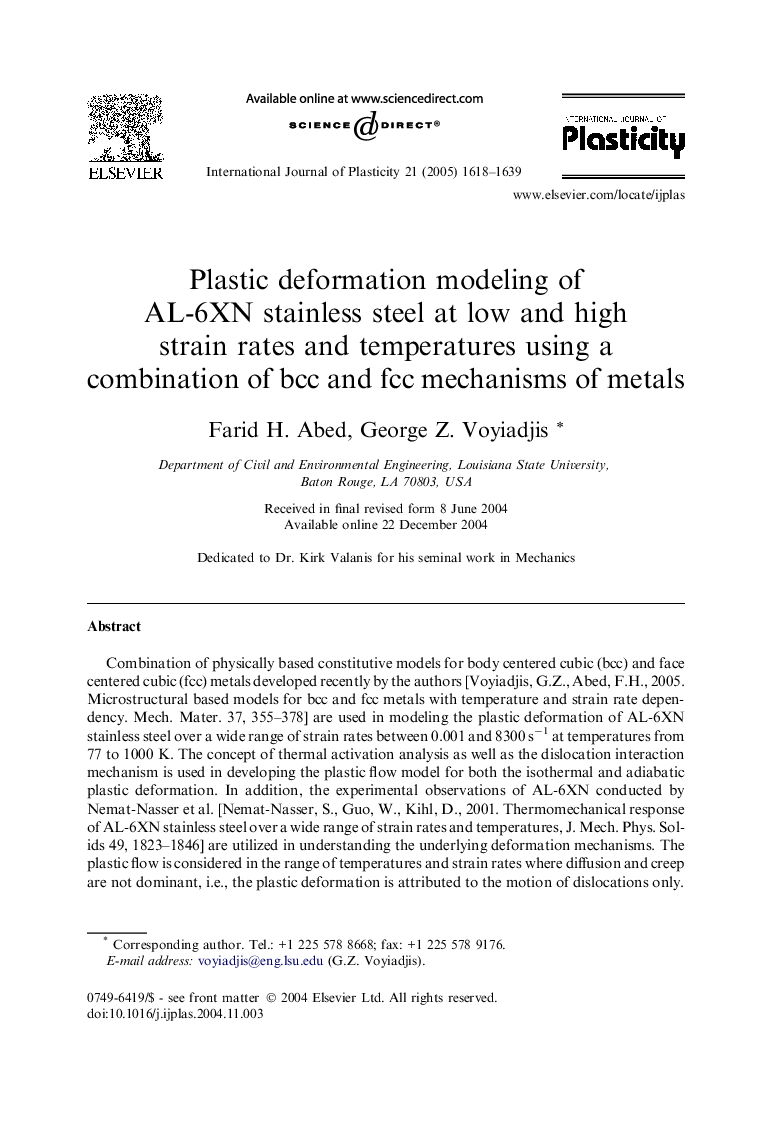| Article ID | Journal | Published Year | Pages | File Type |
|---|---|---|---|---|
| 9707210 | International Journal of Plasticity | 2005 | 22 Pages |
Abstract
Combination of physically based constitutive models for body centered cubic (bcc) and face centered cubic (fcc) metals developed recently by the authors [Voyiadjis, G.Z., Abed, F.H., 2005. Microstructural based models for bcc and fcc metals with temperature and strain rate dependency. Mech. Mater. 37, 355-378] are used in modeling the plastic deformation of AL-6XN stainless steel over a wide range of strain rates between 0.001 and 8300 sâ1 at temperatures from 77 to 1000 K. The concept of thermal activation analysis as well as the dislocation interaction mechanism is used in developing the plastic flow model for both the isothermal and adiabatic plastic deformation. In addition, the experimental observations of AL-6XN conducted by Nemat-Nasser et al. [Nemat-Nasser, S., Guo, W., Kihl, D., 2001. Thermomechanical response of AL-6XN stainless steel over a wide range of strain rates and temperatures, J. Mech. Phys. Solids 49, 1823-1846] are utilized in understanding the underlying deformation mechanisms. The plastic flow is considered in the range of temperatures and strain rates where diffusion and creep are not dominant, i.e., the plastic deformation is attributed to the motion of dislocations only. The modeling of the true stress-true strain curves for AL-6XN stainless steel is achieved using the classical secant modulus for the case of unidirectional deformation. The model parameters are obtained using the experimental results of three strain rates (0.001, 0.1, and 3500 sâ1). Good agreement is obtained between the experimental results and the model predictions. Moreover, the independency of the present model to the experiments used in the modeling is verified by comparing the theoretical results to an independent set of experimental data at the strain rate of 8300 sâ1 and various initial temperatures. Good correlation is observed between the model predictions and the experimental observations.
Keywords
Related Topics
Physical Sciences and Engineering
Engineering
Mechanical Engineering
Authors
Farid H. Abed, George Z. Voyiadjis,
